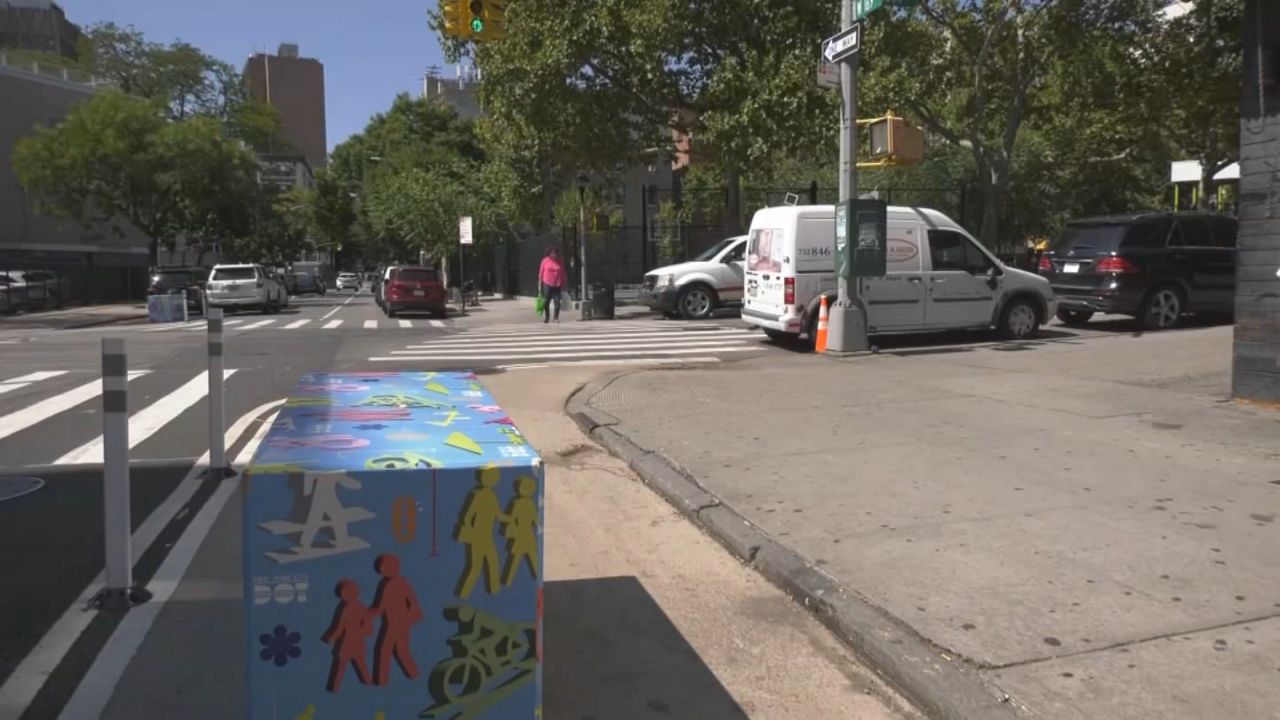Maria Sumba crossed the intersection of 46th Street and 47th Avenue in Sunnyside,Queens, where last year, her 16-year-old daughter Jael was killed by a turning driver.
“When this happened to my daughter, my whole world came down,” Sumba said.
The intersection has no daylighting, which leaves 20 feet between the last parked car and the end of the curb for better visibility.
What You Need To Know
- A bill currently in the City Council would mandate all city intersections, more than 30,000, be daylighted or have 20 feet of space between the last parked car and end of the block
- The city’s Department of Transportation believes daylighting if not hardened by placing granite blocks, planters or bike racks, invite cars to park illegally and in other instances could embolden drivers to take turns faster — making the intersection less safe
- The DOT did a study on the effectiveness of daylighting that looked at the more than 7,000 intersections with it in the city but also other cities
Advocates like Councilmember Julie Won believe it would have made a difference.
“Over 200 people die every single year at intersections,” Won said. “And we do know that the Department of Transportation [itself] has already been investing in daylighting with hardened barriers, which is exactly what we’re calling for as well.”
Won is sponsoring a bill, known as Intro 1138, that would require the city to daylight every intersection, 1,000 each year.
“There’s over 33,000 intersections in the city of New York,” said Won. “That means that it’ll take over 33 years. We are not expecting this to happen overnight.”
The city’s Department of Transportation (DOT) is in favor of daylighting but says a one-size fits all approach can actually make some intersections more dangerous.
“If you just ban the parking, don’t do anything else, you actually make it easier to turn at a fast speed,” Eric Beaton, a deputy commissioner and longtime planner at the DOT, said. “And that’s ultimately what we’re most worried about is that we could unintentionally have those negative safety effects.”
Beaton says a study the DOT did on daylighting found that without hardening, placing immovable objects like granite blocks, planters or bike racks in that space, it’s not effective and that other treatments may be just as effective.
“No one had really done this type of study before. So we were breaking new ground,” Beaton said. “And I think really adding to the conversation, which is that daylighting is good, but it has to be done correctly and in the right places.”
Meanwhile, Won dismisses the study.
“Their study and their research [are] garbage,” Won said.
There is already a law that requires 100 intersections to be daylit a year. Last year, the DOT did over 1,000.
The study did change the mind of one council member, Gale Brewer, who removed herself from Won’s bill, saying it needs to give the DOT more discretion.
“I’m for daylighting, but I’m for input from DOT,” Brewer said.
There’s no way of knowing whether daylighting would have saved Jael Sumba.
Regardless of her mother is only left with memories.
“She was the best thing God ever gave me,” Sumba said while clutching a photo of her daughter.
According to the DOT, the city has over 7,000 daylit intersections; to universally daylight every intersection with hardened barriers would cost about $3 billion.
